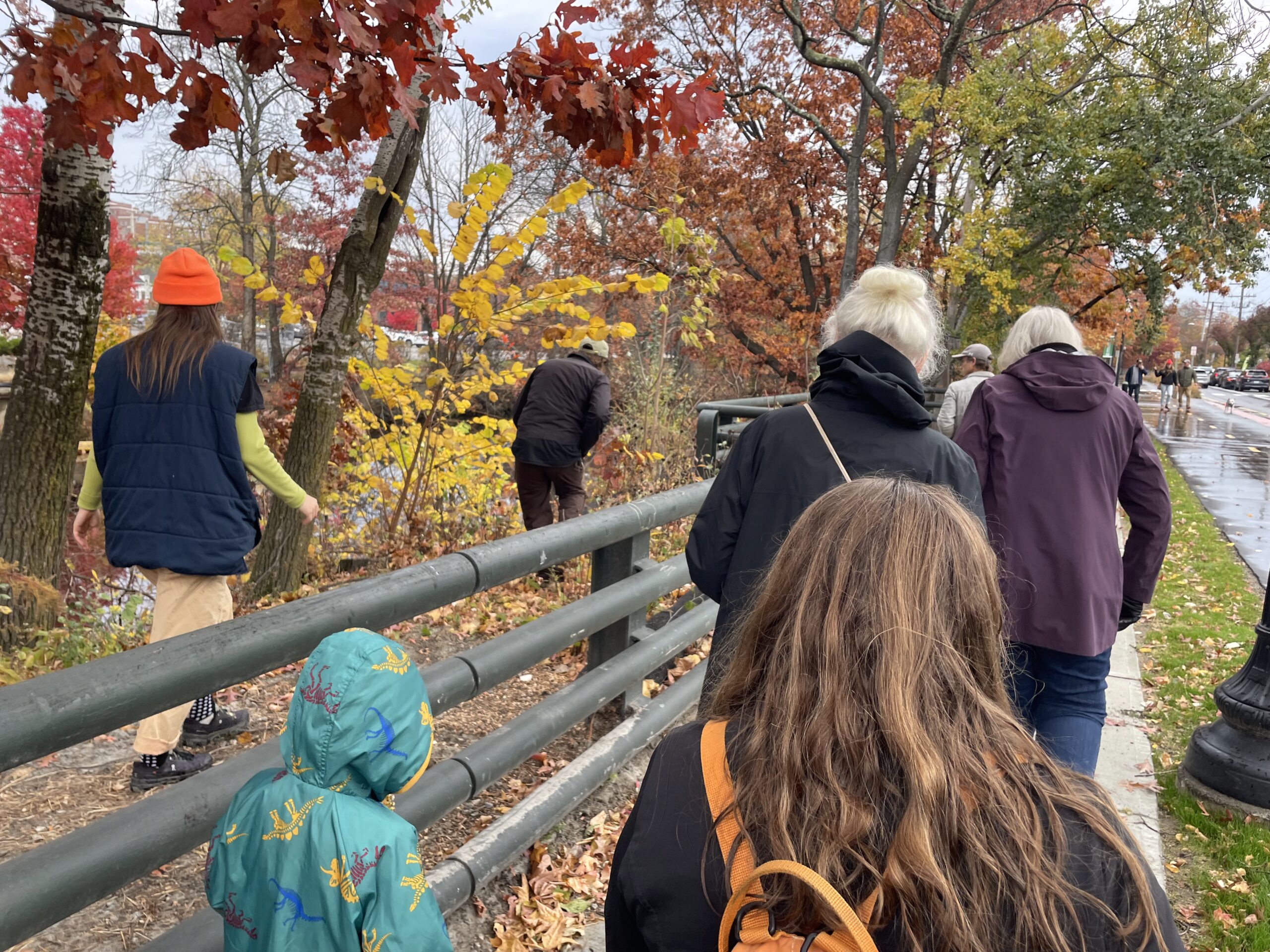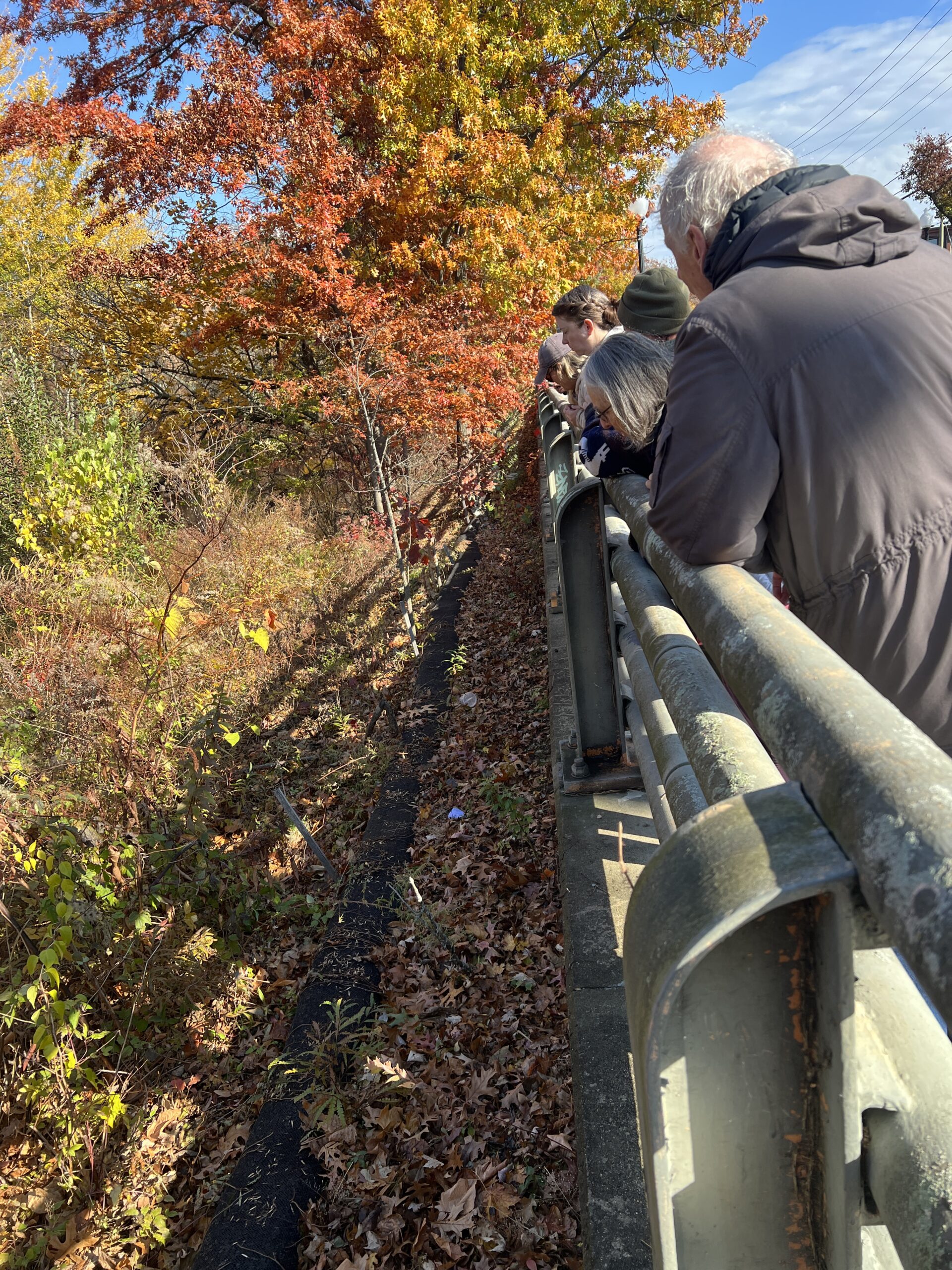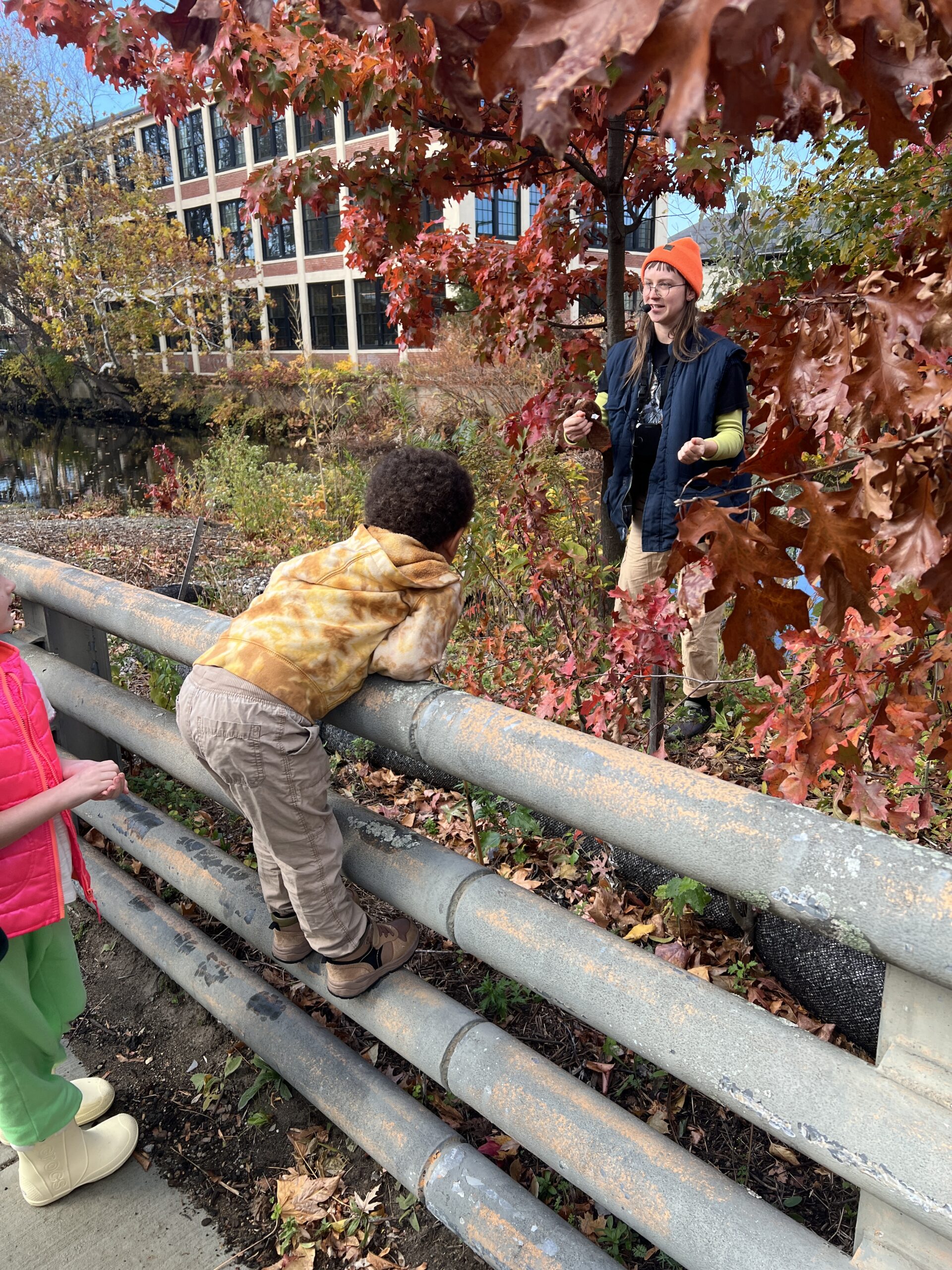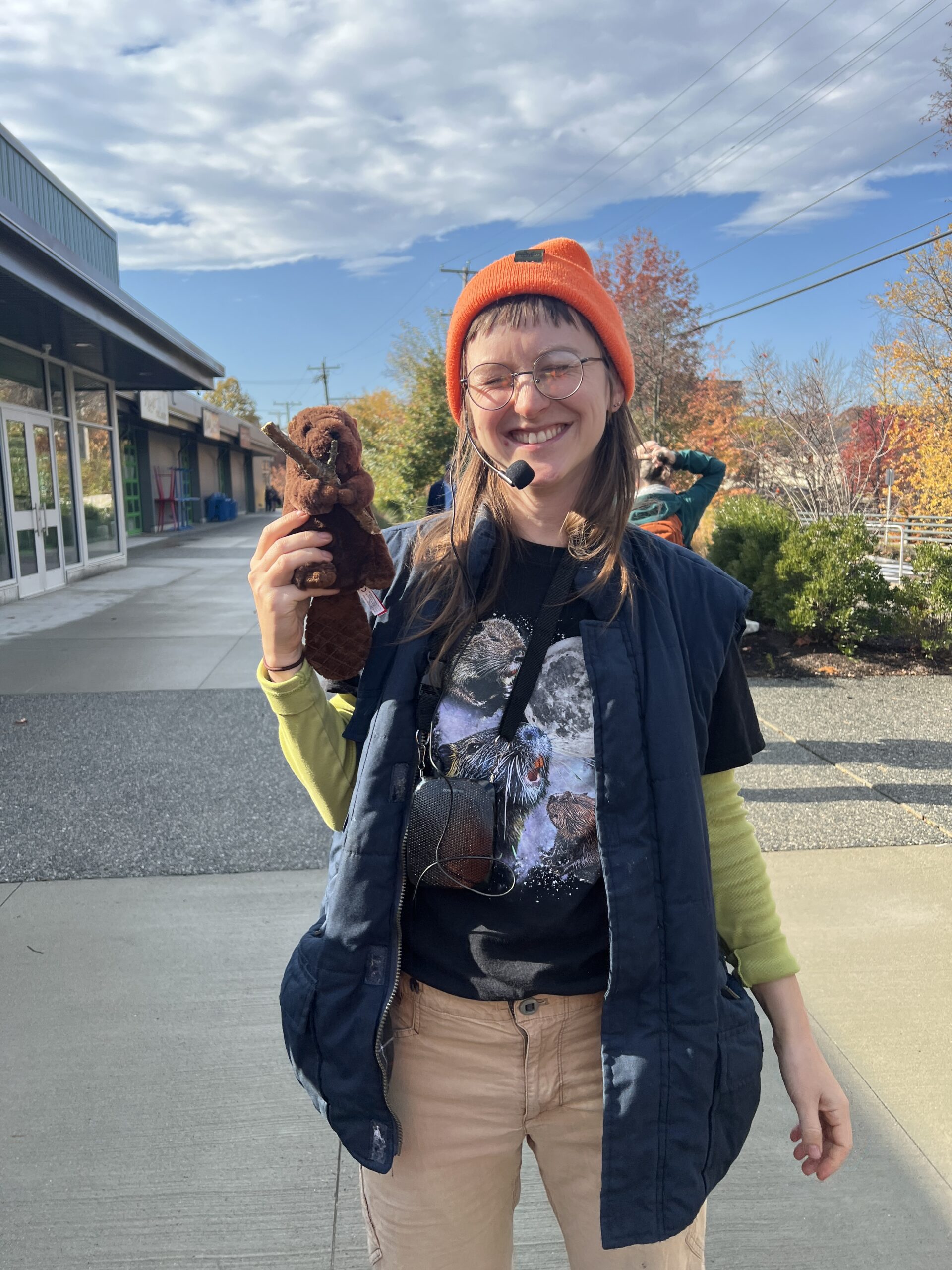Exploring the Woonasquatucket with Our Beaver Walk & Talk
A weekend of wildlife, watershed science, and community curiosity
This past weekend, more than 40 beaver enthusiasts joined us for our Beaver Walk & Talk along the newly completed stretch of the Woonasquatucket River Greenway on Kinsley Avenue. With help from 15 Minute Field Trips, we set up an interactive table at Farm Fresh and offered two guided 30-minute walks, each packed with wildlife signs, river restoration highlights, and plenty of beaver lore.

Learning from the Experts
Tours were led by Molly Hastings of Rhode Island Beaver Management and WRWC River Ranger Andrew, who teamed up to deliver a lively mix of natural history and on-the-ground watershed knowledge. Molly, who has years of experience mediating human beaver conflict, shared how these remarkable animals shape entire ecosystems and why coexistence is both possible and beneficial.
Andrew added local knowledge from his time stewarding this stretch of the river, pointing out restoration work, new plantings, and areas of recent beaver activity.

A Walk Through Beaver History
Participants learned that beavers once numbered in the millions across North America, transforming waterways through their engineering. Molly and her crew demonstrated how beavers instinctively react to the sound and feel of moving water, an instinct that explains why devices like the beaver deceiver are so effective at helping humans and beavers share space.
We talked about everything from body adaptations to behavior, including the fun fact that you cannot reliably determine a beaver’s sex without, well, smelling it.
Discovering Signs of Beaver Activity
Along the path, Molly and Andrew guided participants to fresh chew marks and older gnawed trunks, teaching families how to recognize the difference. We examined which species beavers prefer, such as white poplar, and celebrated the beavers’ taste for invasive Japanese knotweed, which they have been helping to manage naturally.
Participants also learned that beavers tend to avoid resinous evergreens. This is good news for restoration. By planting species like bald cypress, which is already thriving along the tideline thanks to daily watering, we can design riverbanks that support habitat and withstand beaver browsing.

Stewardship on the Greenway
As we explored the newest segment of the Greenway, we highlighted WRWC’s ongoing stewardship work, including tree plantings for streambank stabilization, invasive plant management, and the role beavers can play as partners in ecological restoration.
The walk also showcased recent improvements including the new public boat launch, stormwater upgrades, and native plantings that contribute to a resilient, climate-smart river corridor.
A Family-Friendly Morning of Discovery
With interactive materials from 15 Minute Field Trips, kids and adults alike enjoyed hands-on learning that made the morning both fun and accessible. The pace was gentle with frequent stops, and families appreciated the easy parking and welcoming atmosphere.
This particular beaver has been spotted often in recent months, and our participants were excited to explore how wildlife and urban design intersect right here in Providence.
Thank you to everyone who joined us for the Beaver Walk & Talk.
By learning about the animals that share the watershed and by exploring the restoration projects that keep the river healthy, we build a community of informed stewards who help the Woonasquatucket thrive.

